More than half of global energy workforce is looking for a new job, according to new research, and that could be a problem of epic proportions for the industry and economies around the world that rely on it.
Roughly 67% of the workers canvassed for the annual Women in Energy Global Study are contemplating a move within the next two years. Split along gender lines, it’s 61% of women and 72% of men surveyed.
Among women workers, the results reflect a 17% increase from the previous year.
The impetus behind apparent worker wanderlust can be difficult to pinpoint, Vicki Codd, group marketing director for NES Fircroft, told Hart Energy.
However, it does reflect the pandemic-induced macro trend of the so-called “Great Resignation.”
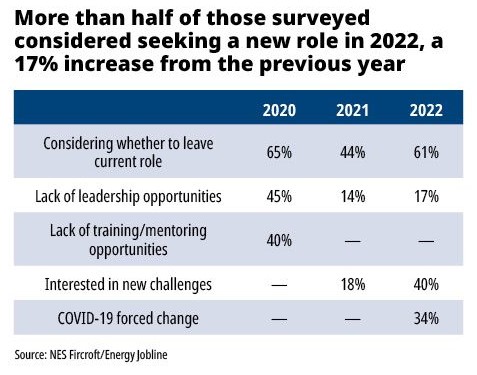
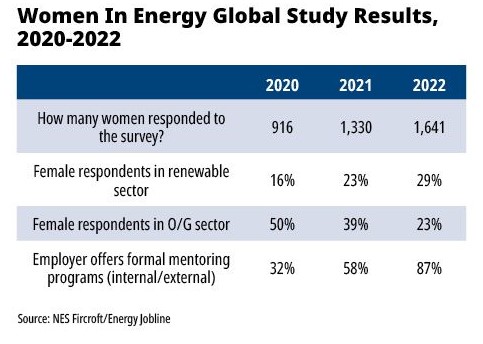
“People are generally across all industries reassessing their options following the pandemic,” she said. “The market is buoyant, and engineering talent is in demand, making it easy to move.”
Investigating the barriers to women working in the field both in the U.S. and abroad, NES Fircroft, an industry staffing services firm, teamed with global energy job board hub Energy Jobline to circulate the survey between Aug. 1 and Sept. 30, 2022.
A group of 2,444 people answered the firms’ 21 questions, 67% of whom were women. The two firms reviewed and collated the results with supporting partner, POWERful Women, an initiative of the U.K.’s Energy Institute.
The “Great Crew Change”—an industry bogeyman that haunts the space on its own boom-and-bust cycle—preceded the “Great Resignation.” The one-two punch of those dynamics set the scene for a worker shortage—or, perhaps more specifically, a “talent crisis”—that has been years in the making.
COVID-19 took some 100,000 workers out of the North American oil patch and roughly only one-half of them have returned, according to market research. Large companies, small firms and the various sized shops in-between continue to feel the pinch.
The case can be made that there are people to fill the jobs. Women represent almost half of the U.S. workforce, according to World Bank data. But the figure falls dramatically when it’s applied to the energy workforce. Women represent about 25% of the workforce in the U.S. energy industry, despite accounting for 47% of total labor.
In short, management at energy companies, particularly in the U.S., cannot afford to apply business as usual tactics to retaining talent.
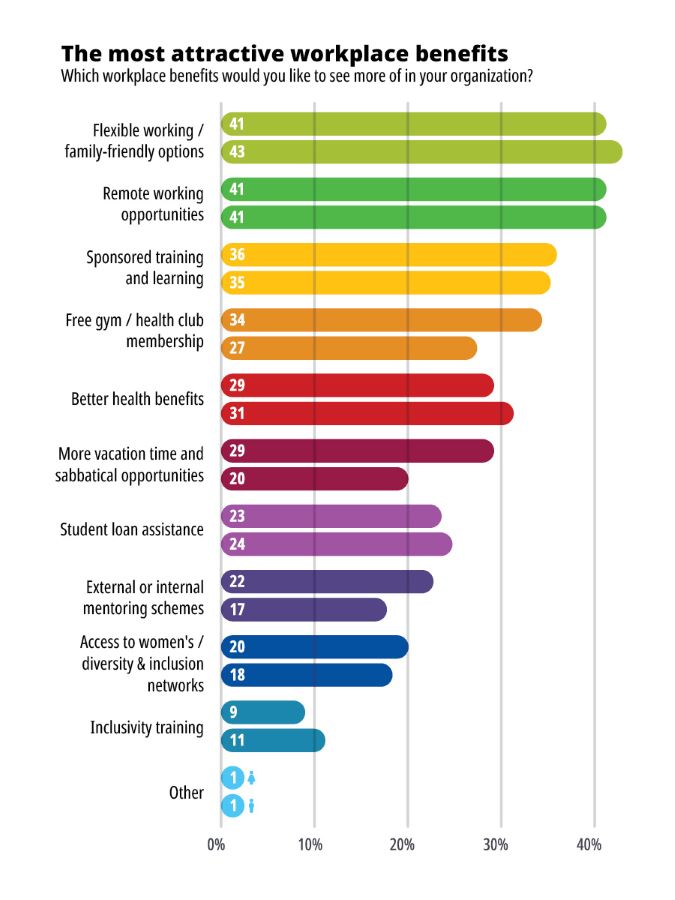
The women in energy report is designed to shed light on the female energy workforce across five continents and all sectors. But in 2022, the researchers found small differences between men and women when it came to where they work, what they do and what they need.
“Both women and men are still struggling to progress their careers, more than two years since the start of the health crisis, and it seems to be getting worse,” said Georgina Worrall, project manager at POWERful Women.
“With the energy sector facing a skills shortage as it transforms for the energy transition, companies need to be offering more opportunities and focusing on developing their people,” she continued. “They should ensure that they are supporting, cultivating and retaining the female talent that already exists within their organizations.”
In its fourth annual questionnaire, the survey asked whether women are more interesting in working for companies that area focused on reaching net zero or being carbon neutral. A resounding 83% said yes.
Women in the energy workforce have said in previous years that these corporate commitments align with their own values.
“But I think there is also an element of seeing it as the future and where the exciting projects will come on line for engineers,” Codd said.
Indeed, the key aspects of the industry that attracted many of the women surveyed included addressing climate change needs and contributing toward net zero/carbon neutrality, developing solutions to meet evolving energy demands and experiencing the opportunity to work on new technologies, she said.
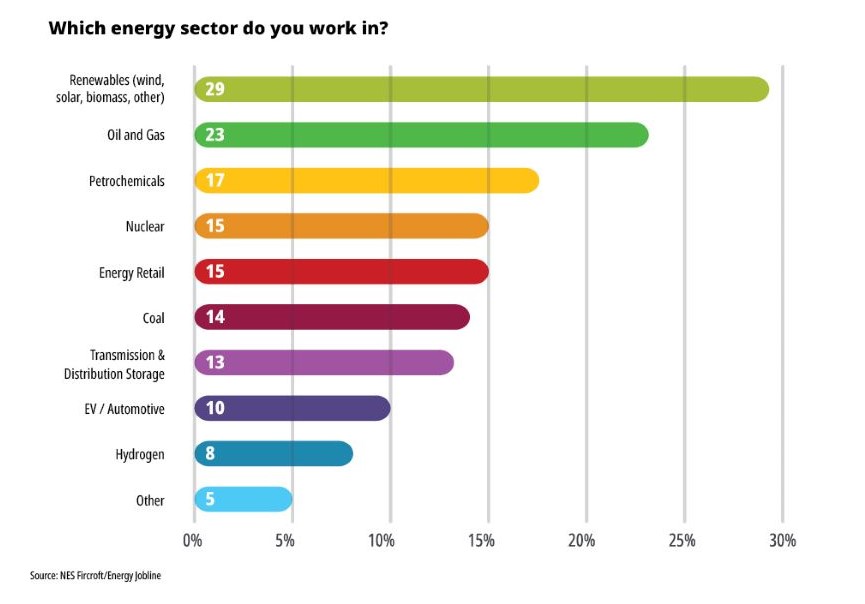
Net-zero messaging is clearly an important part of the “employee value proposition,” said Energy Jobline director Josh Young.
“Following the Great Resignation, companies need to have things up their sleeves in their talent strategy; these messages are a key way to attract and retain women in the energy sector,” he said.
And workers regardless of gender indicate they expect more than lip service.
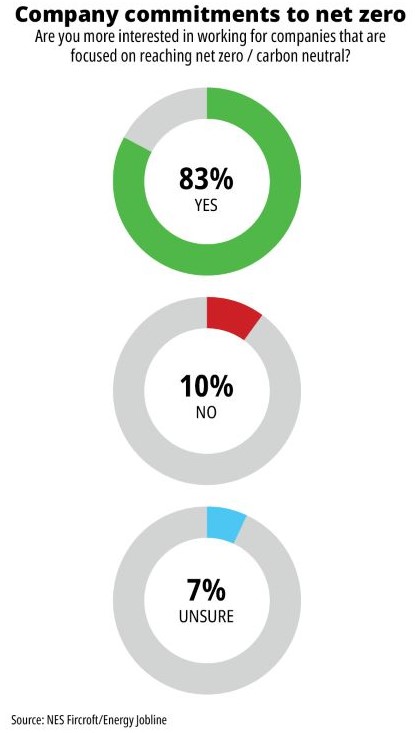 “Companies are expected to have a clear ESG strategy in place and demonstrate they are making a real impact affecting positive change,” Codd said. “It’s something investors and candidates applying for jobs look at.
“Companies are expected to have a clear ESG strategy in place and demonstrate they are making a real impact affecting positive change,” Codd said. “It’s something investors and candidates applying for jobs look at.
A full 75% of all workers surveyed said they believe their company is “genuinely committed” to achieving net zero and/or reaching climate change targets.
“Greenwashing by companies on their environmental commitments might be becoming a thing of the past,” she said. “Not only do people want to work for companies that are committed to the transition to net zero and finding solutions to climate change, they believe that commitment is genuine.”
Almost half of the women who responded to the survey held senior positions, and 72% of them have less than a decade in the industry.
Rather than being a knock-on effect of the Great Crew Change, Codd said it could be an indicator that efforts to encourage young women to study the sciences and technology are working.
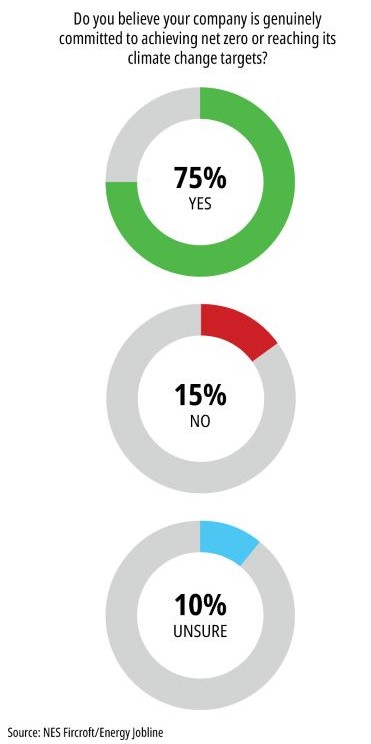 “This could be a really positive indicator that times are changing and more women are studying STEM [science, technology, engineering and math] and coming through in to the sector,” she said.
“This could be a really positive indicator that times are changing and more women are studying STEM [science, technology, engineering and math] and coming through in to the sector,” she said.
Survey results also indicate that companies are finding ways to develop those young women in the field. In 2021, women reported a dearth of formal mentoring options at work. Almost 40% said their employers offered no mentoring opportunities; that dropped to 9% in 2022.
Among the firms that have created mentoring initiatives, 77% of respondents—both women and men —have made use of them.
Companies likely saw the writing on the wall, which the Great Resignation put in graffiti across all energy sectors. Mentoring helps retain current talent—and it can be largely expense neutral.
“Mentoring programs are a relatively low-cost activity, a fantastic addition to any [diversity, equality and inclusion] strategy and can bolster retention,” Worrall said. “In a year when budgets are tight, mentoring could be an attractive option to offer employees.”
Recommended Reading
Woodside Reports Record Q3 Production, Narrows Guidance for 2024
2024-10-17 - Australia’s Woodside Energy reported record production of 577,000 boe/d in the third quarter of 2024, an 18% increase due to the start of the Sangomar project offshore Senegal. The Aussie company has narrowed its production guidance for 2024 as a result.
Twenty Years Ago, Range Jumpstarted the Marcellus Boom
2024-11-06 - Range Resources launched the Appalachia shale rush, and rising domestic power and LNG demand can trigger it to boom again.
ConocoPhillips Hits Permian, Eagle Ford Records as Marathon Closing Nears
2024-11-01 - ConocoPhillips anticipates closing its $17.1 billion acquisition of Marathon Oil before year-end, adding assets in the Eagle Ford, the Bakken and the Permian Basin.
Wildcatter at Heart: Autry Stephens (1938-2024)
2024-08-18 - Legendary wildcatter Autry Stephens, founder and chairman of Midland Basin E&P Endeavor Energy Resources, stayed true to his “never sell” strategy.
Investor Returns Keep Aethon IPO-ready
2024-10-08 - Haynesville producer Aethon Energy is focused on investor returns, additional bolt-on acquisitions and mainly staying “IPO ready,” the company’s Senior Vice President of Finance said Oct. 3 at Hart Energy’s Energy Capital Conference (ECC) in Dallas.
Comments
Add new comment
This conversation is moderated according to Hart Energy community rules. Please read the rules before joining the discussion. If you’re experiencing any technical problems, please contact our customer care team.





